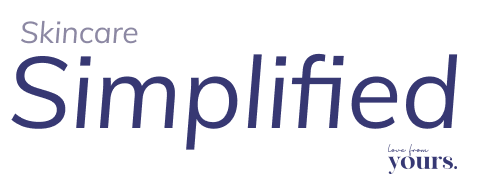Retinol is considered the gold standard in skincare. It’s a must-have vitamin for the skin. It acts as an antioxidant that fights free radicals, it has exfoliating properties, and this highly effective anti-aging ingredient acts against everything from acne to wrinkles. It’s the number one face-care search term on Google, but many people are confused about what it is, how to use it and whether it’s suitable for them. We tell you everything you need to know.
What is retinol?
Retinol is a derivative of vitamin A; a member of the retinoid family. Discovered in 1909, it is the alcohol form of vitamin A, which is one of the essential vitamins our bodies need for everything from our immunity and vision (we become night-blind from deficiency) – to healthy skin.
We obtain it from our food ideally (see below), or from oral supplements. For our skin, it’s best to get it from a topical skin care product we apply to it, so it benefits directly. Unfortunately, many of us don’t get enough vitamin A in our diets, and sun exposure also destroys vitamin A in our skin. That’s why it’s necessary to top up the supply – if we want to maintain healthy, youthful-looking skin.
Ready for the science bit?
The form of vitamin A that is most available to the body is called retinoic acid (aka tretinoin – the form used in Retin-A and RoAccutane, available only on prescription). The problem with applying retinoic acid directly is that it is very irritating to the skin.
Enter retinol… It is tolerated better by the skin. It can penetrate the skin’s outer layer and down into the deeper dermis layer, where all the important skin-health stuff happens. Once in the skin, the body does a neat trick, changing it into retinoic acid.
- Retinol and retinoic acid are the most effective forms of vitamin A for the treatment of premature aging from the sun’s UV rays.
- Studies were first conducted in 1943 on retinol’s use to treat acne, blackheads and blocked pores. Interestingly, the study participants noticed it also had effects on reducing fine lines and wrinkles, and its anti-aging application was born.
- Because it is gentler than retinoic acid, it doesn’t need a medical prescription.
- Retinol is the most common form of retinoid found in store-bought vitamin A products, usually at a low concentration.
The problems with retinol:
It can cause some skin irritation, but newer formulas release it slowly, reducing the risk of a reaction and making it better suited for skin prone to redness.
On top of that, it is an unstable molecule that reacts to light and air, which degrades it and makes it less effective. Thus, when you choose a retinol product, look for airless pump bottles or opaque tubes with tight-fitting caps to ensure that the ingredient is properly encapsulated and protected. On top of that, make sure to use the product within 2 months.
What types of products can we find retinol in?
Because retinol is such an effective and well-known ingredient, it’s used in both acne and anti-aging formulations and even some makeup products such as foundations.
You can choose from different textures according to preference, skin type and climate or season including concentrated serums, gels, lotions, night creams, masks, peels, and eye treatments.
Is retinol synthetic or derived from nature?
It can be either. We get dietary vitamin A in the form of retinol from the liver, butter, cod liver oil, eggs, cheese and milk. We also get it from orange, yellow and dark green vegetables (in the form of β-carotene or carotenoids). Finally, it can also be manufactured in laboratories, especially when it comes to skincare.

What does retinol do for the skin?
- It normalizes and regulates skin cell functions and repairs damaged cells.
- It improves skin texture and thickness. It boosts collagen production, giving your skin more firmness, structure, plumpness and strength. It also prevents the breakdown of collagen and elastin, helping smooth wrinkles and sagging.
- It improves cellular turnover. It helps replace old dead skin cells more quickly, so skin looks smoother and more radiant.
- Its exfoliating action helps to unclog pores. This prevents blackheads, whiteheads, pimples and cystic acne.
- Promotes an even skin tone. It helps fade hyperpigmentation (brown spots and patches) and gives the complexion a more even appearance.
- It helps to clear up acne. It normalizes overactive oil glands and unclogs pores. This makes skin more clear, reduces breakouts, and makes pores look finer. It also helps fade post-inflammatory hyperpigmentation and improve acne scarring.
- Reverses the effects of sun damage. The antioxidants in retinol can help repair sun-damaged skin, including lightening dark spots.
- It counters environmental damage from exposure to blue light from screens, smoking and pollution.
- It reduces water loss from the skin and improves blood flow.
- Helps treat keratosis pilaris. It helps smooth dry, rough bumps on the backs of arms.
Need-to-know before you start using retinol
- You should not use retinol or retinoids when pregnant, planning to be, or breastfeeding. High doses of vitamin A can be damaging to the foetus and increase your risk for birth defects.
- Before treatments like lasers, micro-needling, chemical peel, or microdermabrasion, stop using retinol at least a week before.
- Skip retinol the day before you exfoliate to prevent irritation and sensitivity.
- Don’t use retinol on vacation to a sunny spot.
- While using retinol, use an SPF 50+ sunscreen with UVA and UVB protection and a broad-brimmed hat during the day. Retinol increases skin’s photosensitivity and may make you more prone to sun damage and sunburn, plus post-inflammatory hyperpigmentation.
- Be careful if you have dark skin when using retinol. It may cause irritation, which can trigger hyperpigmentation.
- Retinol can make your skin more sensitive to other products or ingredients. Avoid using scrubs, harsh toners, vitamin C, alpha- and beta-hydroxy acids (AHAs and BHAs) or benzoyl peroxide at the same time as you apply retinol.
- Ingredients like niacinamide, hyaluronic acid, shea butter, squalane, marula and cranberry-seed oil and ceramides help to make retinol formulations less harsh.
- More is not more. Applying more retinol than recommended won’t give you faster results – it will just cause dryness and irritation.
Who can use retinol?
Retinol is suitable for most skin types. But you must find the right percentage and formulation for you, especially if you have sensitive or reactive skin. In fact, it is effective in treating rosacea (redness). Speak to your dermatologist to determine whether it’s suitable – if you have sensitive skin conditions such as eczema, rosacea or skin allergies – as it can flare up inflammation.
Tip for sensitive skin conditions: Introduce it very gradually (once a week), and prep your skin first with a soothing moisturizer before applying retinol.
Side effects when using retinol
- Mild irritation, slight redness, flakiness, tingling, dryness and sun sensitivity are NORMAL as your skin adapts. It should stop after 2 to 3 weeks.
- Intense flaking, redness, stinging, blistering and burning is NOT NORMAL. Stop using it and see your dermatologist.
At what age should you start using retinol?
Some experts advocate using retinol from your teens to help with oily or problem skin. For anti-aging benefits, start incorporating it into your routine in your 20s to slow the appearance of the first signs of environmental aging on your skin.
How to introduce retinol into your skin routine
With retinol, slow, gentle and steady get the best results. Find the right low retinol percentage dose to start, start slowly, and make sure you’re only applying it at night as it can increase your skin’s sensitivity to sunlight.
- Cleanse the skin with a gentle cleanser and don’t use a toner or scrub.
- Dry the skin thoroughly before applying retinol. Damp skin may lead to increased irritation.
- Dab a pea-sized amount onto your cheeks, forehead, nose and chin. Gently rub it in. Use another pea-sized amount on your neck and chest.
- Apply moisturizer on top of the retinol.
Gradually increase how often you use it in a week. If you notice redness or irritation the next day, skip that night’s application. But, if your skin tolerates it well, slowly (as in over eight weeks) work your way up to using it every night.
Remember to go beyond your face to treat your neck, décolletage and body too, as it is excellent for keeping your body skin looking firm, smooth and youthful. Find a body treatment with retinol or mix in some serum into your plain body cream.
If you find your skin is sensitive, peeling, or irritated, try the sandwich technique: Apply a hyaluronic-acid serum, then retinol, and lastly a soothing moisturizer on top.
Last, but not least, make sure to store your retinol product in a cool, dark place to maintain its efficacy.
How long before you see results?
With retinol, it’s a long game. With lower concentrations, it may take between a few weeks to a few months to start seeing results. But don’t be tempted to increase the concentration to get faster results – high concentrations can lead to dryness and irritation. That said, retinol prescribed by a doctor generally tends to work a bit faster.
Which ingredients can you use if retinol is not for you?
The plant-based ingredient bakuchiol is the newest anti-aging darling. It’s positioned as a gentle, non-irritating alternative to retinol with similar benefits.
It’s safe to use during pregnancy if you are allergic to vitamin A. It helps with cell turnover and is effective in decreasing fine lines and wrinkles, curbing acne, dark spots and loss of firmness significantly – without any harsh side effects.
Ready to start your retinol journey to tackle acne or fine lines and wrinkles? Take our free skin assessment, and we’ll personalize a day and night skincare routine for you featuring this powerful ingredient!






